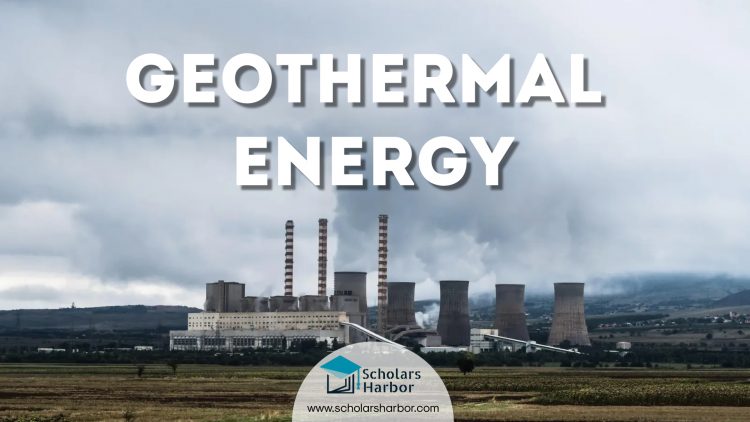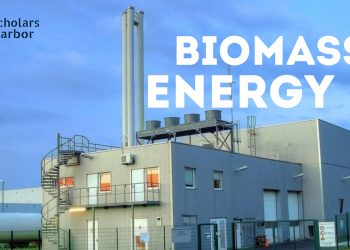The energy stored as heat in the Earth’s crust is referred to as geothermal energy. The composition of our planet’s core is connected to the source of this heat. Regardless the fact that this heat exists in massive in the Earth’s crust dispersed unevenly, hardly concentrated, & generally found at depths that are too great to be utilized commercially.
However, this point is frequently overlooked, heat goes from the Earth’s crust to the top, where it dissipated. Scientists know that it exists because the heat of rocks increases with depth, confirming the existence of a geothermal gradient and can be used commercially. The extraction & usage of this huge amount of energy needs the use of a carrier to transport the heat to reachable depths under the Earth’s surface.
In general, heat is transmitted from the bottom to subsurface regions via conduction & subsequently convection, with geothermal fluids serving as the carrier in this scenario. Reservoirs are critical components of most geothermal fields. Most reservoirs are buried with impermeable stones, which restrict heated fluids from reaching the surface.
Is Geothermal a Renewable Source?
Geothermal energy is frequently referred to as a renewable source of energy. However, geothermal resources are not technically sustainable on the geological timescale commonly utilized in human culture. They are only sustainable if the rate of heat extraction has not surpassed the pace of reservoir refilling. In every geothermal application, it’s crucial to properly dispose of the used, cooled fluid.
Geothermal Energy Production
Geothermal energy production is divided into two concepts.
- Hydrothermal Systems
- Petrothermal Systems
1. Hydrothermal Systems
Geothermal energy is generated via hydrothermal systems, which utilize hot water from deep reservoirs. Production well is needed to access the hot water & re-injection well is needed to dispose of the used water in the traditional extraction method. The heat is either used directly or indirect (transferred to a secondary cycle through heat exchanger as the water is pumped to the earth surface).
The remaining liquid is then injected again into the same reservoir through a secondary well, but at a particular distance from the source in order to retain the aquifer’s productivity & avoid a thermal breakout. 1 production well and 1 injection well make up this arrangement, which is known as a doublet.
2. Petrothermal Systems
The thermal energy found in deeper rocks is used in petrothermal systems without the utilization of naturally occurring rock formations that liquid. The temp at depth is the most crucial variable for petrothermal systems because deeper depths can get the necessary temperatures. Geothermal energy systems are used to obtain energy from the rocks, deep warm horizons at depths of more than 2500 m with temp.
To use petrothermal systems, deep borehole heat exchangers built in wells between 300 – 3500 m deep can be used. Ammonia is circulated through a coaxial tube network in a closed environment, as the ammonia falls to the bottom of the heat exchanger, it is heated by thermal conduction from the earth’s crust.
Categories of Utilization OF Geothermal Energy
The following are the major ways that geothermal energy is used.
Heat Pumps
The majority of geo-thermal energy is used via geothermal heat pumps, which account for 70% of installed capacity & 60% of annual energy use. Considering the fact that the vast majority of installations are in North America, Europe, & China. The size of individual units varies from small units (5.5 kW for household usage) to huge one (150 kW for commercial & domestic usage).
Electricity Production
Many regions of the planet, especially those near plate borders or in geologically active regions, use geothermal energy. Due to an increase in the number of plants and an increase in their capacity factors, the creation of binary cycle power plants, and advancements in drilling & extraction technologies, output is increasing by 3% annually.
The generating capacity of geothermal power can be fairly high; up to 96% has been recorded. This is because geothermal power doesn’t really rely on fluctuating sources of energy, unlike, for example, wind or solar power. California is home to the world’s largest concentration of geothermal power stations.
Space Heating
One of the earliest direct uses of geothermal power is space heating. The installed capacity of space heating, comprising personal space heating & district heating, has expanded by 60%, while the overall energy use has climbed by 80%. To provide space heating, either heat exchangers or pumped wells can be utilized. Heat pumps are able to raise temperatures to the necessary levels in areas where they are not high enough to suit the space heating needs of homes or commercial properties.
Geothermal Project Planning
A geothermal project’s success depends on careful planning, capable project management, & productive collaboration of professionals from numerous sectors. A geothermal project for space heating typically lasts 6 years worldwide. The length of the development phase can change, nevertheless, based on national regulatory standards, the accessibility of a drilling operation, and other elements. Before the real process is started, It can be categorized into a variety of various development phases.
Preliminary Study
- Defining project’s goals
- Compiling the data
- Writing technical draught
Possibility Analysis
- Data collection
- Financial analysis
- Exploratory risk quantification
Exploration
- Getting permits
- Seismic investigation
- Initial drilling
- Mechanical tests and well stimulation
- Deciding whether to strike
Field Improvement
- Additional drilling
- Hydraulic testing
- Ground facility building
- Obtaining the license site with the regional mining authority
- Launching & Commissioning
Conclusion
In short, geothermal energy is a sustainable and renewable source of energy that harnesses the heat from the Earth to generate electricity. It is reliable, consistent, and can provide both electricity and heating. However, the availability of suitable resources and the cost of exploration and development can be high. Despite these challenges, geothermal energy is an important option for meeting the world’s growing energy needs and reducing dependence on fossil fuels.
Cite this Article
| Author: | Scholars Harbor |
| Year: | 2022 |
| Title |
Concentrated Solar Power and its Types – Explained |
| Publisher: | Scholars Harbor |
| URL: | https://scholarsharbor.com/what-is-geothermal-energy-description-production-and-its-utilization/ |











Discussion about this post